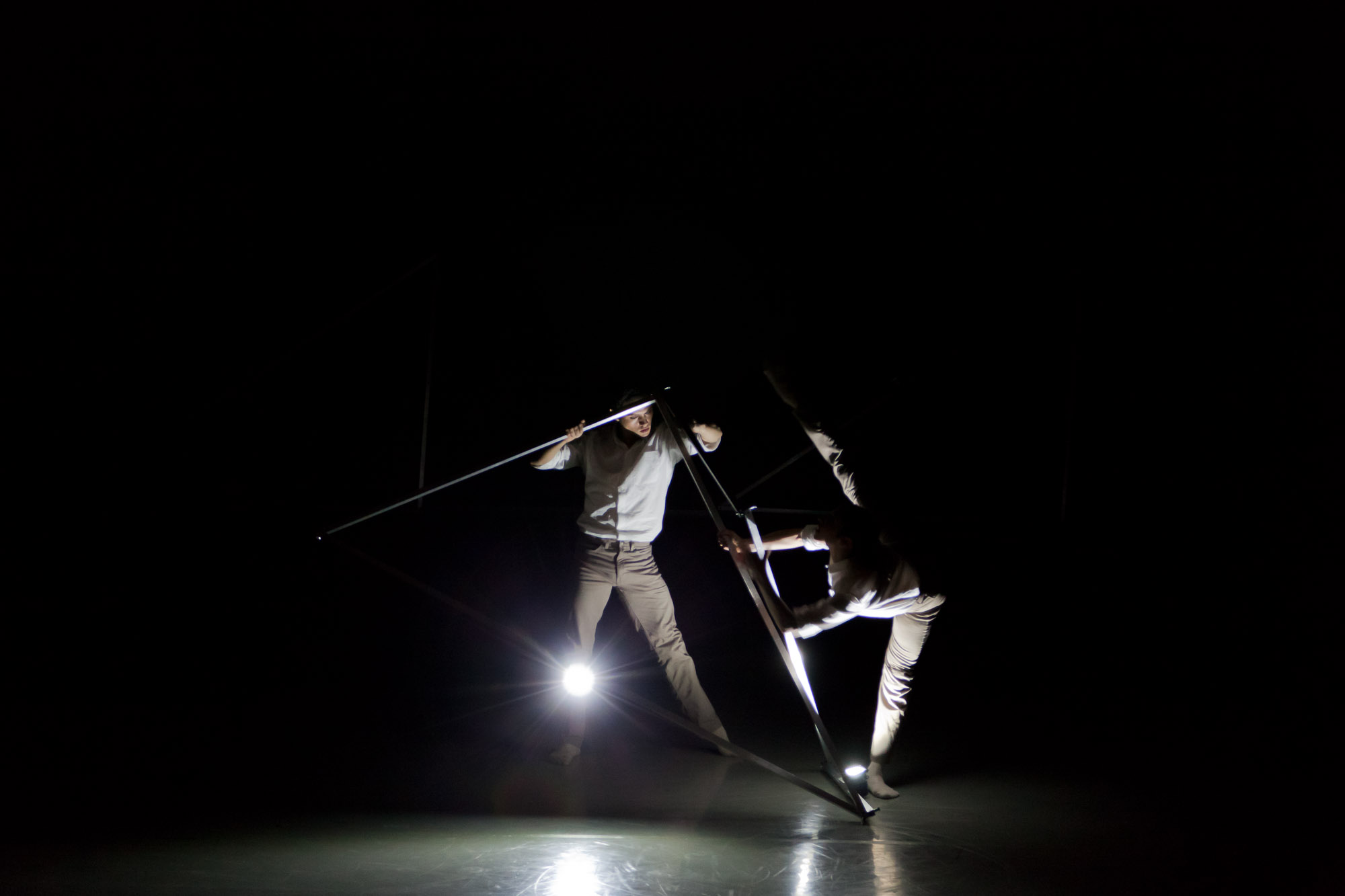A collaboration with Alexander Whitley.
We can see and feel the waste of material things. Awkward, inefficient, or ill-directed movements of men, however, leave nothing visible or tangible behind them. Their appreciation calls for an act of memory, an effort of the imagination.
(FW Taylor, The Principles of Scientific Management)
Frames presents Rambert’s dancers at work. Confronted with a mass of material stripped away from the conventional mechanisms of the theatre, they come together, organise one another and are put to task in their own production site. Objects of numerous forms emerge between the dancers’ actions and a system of metal structures, growing and morphing in and out of life as they surpass the sum of their parts.
The dancers construct and reconstruct familiar elements of a dance production, the material and immaterial, the visible and what is seen. What does dance itself produce if no visible artefact is left over from the dancers’ efforts and how, under the frame of a proscenium arch, do tangible and imaginary worlds collide?
Let the problem be the subject. Exhaust the possibilities of an idea. How much can you make from one thing? Explore the idea in 3D: Alter the plane / Change the orientation / Change the scale / Reverse it / Invert it. All the time attempting to stay as close to the original thing. Keep the logic – change the conditions. Explore different forms of linearity. Straight or curved / One line or many / Direct or indirect pathways / A coordinated or conflicting directionality.
Eliminate all false movements, slow movements, and useless movements / Introduce a lot of tiresome and time-consuming motions / Even if motions cannot be planned to be similar for each hand and performed simultaneously, the plane in which the work is to be done should be carefully located. The direction of a motion that is most economical is the one that utilises gravitation the most / The best ” direction of motion” is not only important in itself for increase of output; it must also be kept constantly in mind in standardising the placing of both materials and men.
> Commissioned by Rambert Dance Company, London
> Music by Daniel Bjarnason
> Photos 1,5,6,8 by Tristam Kenton










